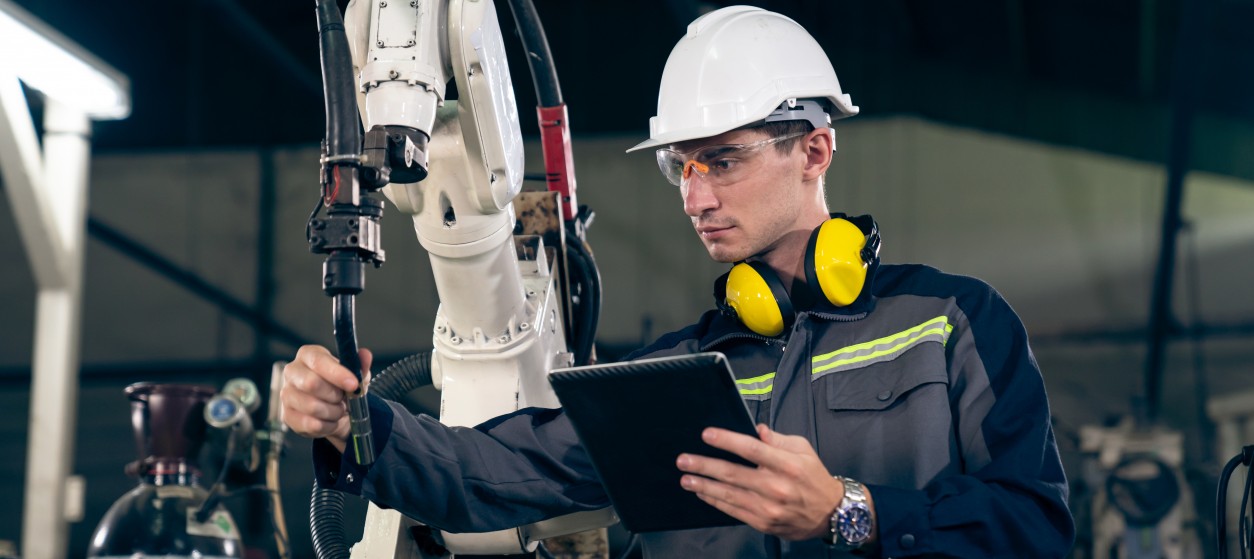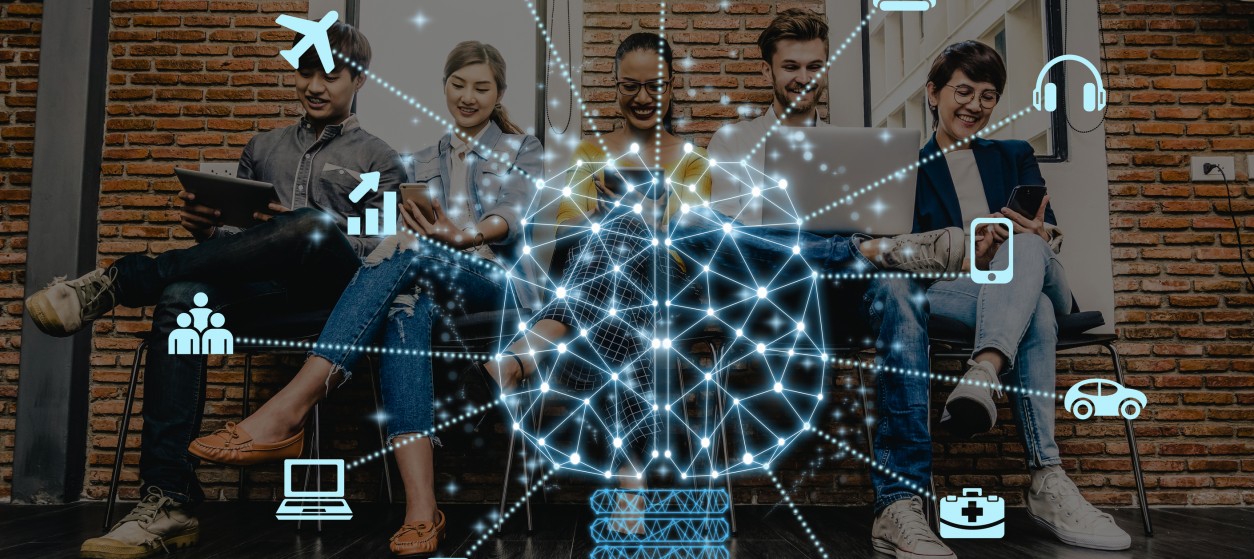The AI vision was articulated over seventy years ago when Alan Turing proposed the Turing Test as a measure of machine intelligence and Isaac Asimov published his Three Laws of Robotics. Artificial Intelligence (AI), since then, has been defined as a pool of technologies that enable machines to perceive their surrounding environments, reason over their context and ultimately act in a way similar to humans. AI makes machines intelligent and enables them to perform complex tasks such as understanding problems, learning and perceiving situations, planning strategies about confronting problems and ultimately controlling other machines. Over the years the acceptance of Artificial Intelligence has grown significantly which has led to a more advanced and better AI technology and a broader range of applications. In following paragraphs we briefly explore the past, the present and the most important: The Future of Artificial Intelligence.
The Past: AI’s Historic milestones
For nearly six decades AI has been evolving at a steady pace. Its evolution is reflected in the improvement of AI technologies such as machine learning and AI programming, but mainly in the evolving intelligence of AI applications. In 1958 the Lisp programming language was invented at MIT by John McCarthy. Lisp is considered as one of the languages that is best suited for developing AI applications. Then years later, in 1968, a programmer called Richard Greenblatt, built an intelligent knowledge-based chess-playing program, which managed to achieve a class-C rating in tournament play. This chess-playing programme was a forerunner for several other AI applications, including programmes that beat the chess world champion.
Another important milestone was for AI was in 1979, when INTERNIST a knowledge-based medical diagnosis program was developed that could leverage clinical knowledge to reach its diagnosis. This was one of the first expert systems in the medical domain. Beyond medical and gaming applications, Allstar Advice Inc. developed the first commercial strategic and managerial advisory system was made in 1987. The system was called Alacrity and was able to parse and interpret financial models and financial statements based on a collection of over 3,000 rules.
Another path-breaking moment was in 1997, when the world watched IBM’s Deep Blue chess machine defeat the then world chess champion, Garry Kasparov. In the same year, the first official RoboCup soccer tournament was organized with the participation of almost 40 teams of interacting robots. This milestone signaled the rise of sophisticated robots and their use in various applications. Till 2005, Honda’s ASIMO robot, an artificially intelligent humanoid robot, was the first machine that was able to walk as fast as a human. ASIMO was used to deliver trays to customers in restaurants. Two years later the Checkers game was solved by a checkers-playing computer program that cannot lose. Ever. This was created by a team of researchers from the University of Alberta, Canada. At the same time, Google started its efforts towards building a self-driving car, which were officially announced in 2009.
Read More: Tools for Artificial Intelligence
The Present: where we stand with the current AI innovations and applications
At present, AI is already used in a wide range of enterprise scale applications. Prominent examples include:
- Vacuum cleaners, which incorporate AI based controllers in order to provide thorough coverage of the space to be cleaned. AI technology enables vacuum cleaners such as iRobot’s Roomba to adapt to real world clutter and furniture. Also, AI empowered cleaners are able to keep track of their position, based on the use of visual landmarks within the space.
- State-of-the-art smart cars, which come with a host of AI based features for increased safety and comfort, such as automatic braking, anti-lock braking systems (ABS), collision avoidance systems, alerts about pedestrians, airbag control, traction control systems, electronic stability control systems, intelligent cruise controls and more.
- Self-driving cars, which are an extension of state-of-the-art cars with autonomous driving capabilities. Following Google’s announcements about its autonomous car vision, Tesla provided, in 2012, a working implementation of a semi-autonomous car. Nowadays, most car manufacturers are implementing roadmaps for rolling out self-driving vehicles shortly after 2020. As part of their self-driving vehicles strategies, manufacturers are also establishing exclusive partnerships with institutes that are at the forefront of AI research in order to endow their cars with the ability to reason about the driving context and take optimal driving decisions.
- Personal Assistant Robots, which provide one of the most tangible applications of AI in the consumer space. Assistive robots engage in tasks such as the provision of information to their users, the signaling of alerts in emergency cases, as well as the entertainment of the users. One example is ASUS Zenbo robot.
The above list is not exhaustive, yet it is representative of real-life uses of the AI today. This increased penetration of robots in pragmatic applications is accounted to the radical advances in AI technology. Indeed, during the last couple of years, we have witnessed new milestones in the evolution of AI technology. One year ago, in March 2016, general-purpose rather than application specific AI was demonstrated, as Google’s AphaGo system beat Lee Sedol, a 9 dan professional Korean champion in the “GO” game. Even though this sounds similar to Deep Blue’s achievements, it is associated with some fundamental advancements comparing to older AI platforms. In particular, AlphaGo used reinforcement learning and neural networks, which provided much more than a brute force calculation of all available options in the game. Reinforcement learning and neural networks operates in a way similar to the human brain. This allowed AlphaGo to be successful in the GO game, which in orders of magnitude is much more complex than chess.
Read More: Current Status of Artificial Intelligence
Artificial Intelligence Future Outlook
In the future, AI will continue to evolve in a way that will enable new disruptive business models and functionalities. It will also play a key role in improving quality of life through enabling humans to complete tasks more efficiently and in less time. In this direction, emerging deep learning technology is expected to play a key role in analyzing more inputs in a timely fashion, while at the same time identifying complex patterns beyond what machine learning can currently provide.
Overall, we should expect the following trends in the deployment of AI:
- Embedded AI: AI will be increasingly embedded in devices in various contexts, including cars, consumer devices, search engines and more. We can expect most of the future devices that comprise the Internet-of-Things to employ AI capabilities.
- AI machines becoming more efficient than people: In the contexts where pure information processing, than creativity, is required, AI machines will be much more efficient than people. Likewise, people will increasingly like to get service from machines rather than humans due to their efficiency and zero-error performance.
- Increased penetration in daily life activities: Personal assisted robots will proliferate and start helping people in accomplishing more and more tasks. AI will assist people in tasks such as medical treatments, food preparation and support with laborious activities.
- Self-driving vehicles and safer transport: The advent of AI-enabled self-driving cars will reduce the count of accidents significantly, saving millions of lives and leading to huge economic savings.
- Augmenting human abilities: AI devices and robots will in the future give us superhuman abilities, by extending our current capabilities in terms of faster processing of information, as well as in terms of performing manual tasks that are not possible nowadays.
- Some of our best friends will be robots: Future robots are likely to be our companions in addition to being valuable assistants. To this end, future robots may be also able to understand human behavior, while feeling our emotions. As depicted in the movie, HER this relationship might not sound appealing today but will provide a radically new human-centric dimension to AI.
And yet it is never possible to completely predict the future of technology and where it’s headed. We do have good evidence that AI will positively disrupt our everyday lives, while changing the world for the better and we should prepare to experience this revolution and embrace all that it have to offer.











WOW just what I was lookkng for. Came here by searching for
odessa forum https://zeleniymis.com.ua/